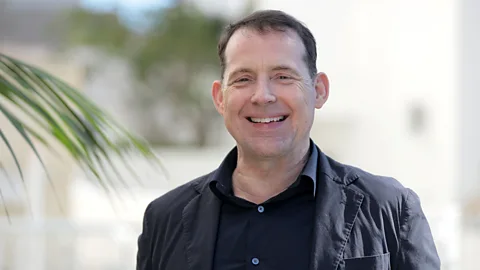The Zone of Interest: How the most horrifying sounds in film history were created
 A24
A24The Holocaust drama is chilling audiences – because of what they hear, not see. Sound designer Johnnie Burn discusses recreating the sounds of the concentration camp.
A film about the Holocaust, 10 years in the making, The Zone of Interest has been winning acclaim as one of the most starkly chilling depictions of human brutality ever created.
It is one of this year's leading awards contenders, with nine nominations for this Sunday's Baftas, and five for this year's Oscars, where, if it did land the top prize, it would certainly be the most shocking best picture winner in history. Yet a lot of its power lies in what's heard, not what's seen.
More like this:
– TV review: A new drama about Coco Chanel and the Nazis
The movie opens with a black screen. For an unnerving couple of minutes, there's no picture, just waves of a haunting atonal drone that eventually fades out. This is the first indication of how important sound will be in this film. Listen, it seems to suggest, and don't be blinded by what you're about to see. "I wanted viewers to realise that they're submerging,” the director, Jonathan Glazer, told Rolling Stone of the intro. “It was a way of tuning your ears [in] before you tune your eyes to what you're about to view.”
 A24
A24The images that follow shortly after are cheerful, relaxed scenes of a young German family on day out in a bucolic setting, and set the grimly jarring tone for the rest of the film. The early reveal is that the family is in fact real-life Nazi commander Rudolf Höss, his wife Hedwig and their five children, while their stately home with its "paradise garden" backs on to the wall of the Auschwitz death camp. Höss is orchestrating and overseeing the construction of the gas chambers which would go on to kill nearly one million Jewish people, just metres from their family home.
It's at this point that the film cleaves into two. As Glazer has explained: "There is the movie you see, and there is the movie you hear." While the visual element – described by Glazer to the Guardian as "Big Brother in the Nazi house" – largely concerns itself with the banal day-to-day activity in the family home, with the characters callously ignoring or joking about the atrocities next door, the sound tells a frighteningly different story.
The film's score was composed by Mica Levi – also responsible for Glazer's last film, Under the Skin – but is sparingly used; rather, it's the non-musical sound design, featuring the recreated sounds of Auschwitz and created by the now Bafta and Oscar-nominated Johnnie Burn, with mixing by Tarn Willers, that is most prominent. The sounds we hear coming from behind the camp wall as the Hösses go about their business are, like the film's subject, horrifying. There are the prisoners' blood-curdling screams, the guards' abusive yells, and gunshots. There's the disturbing mechanical thrum of what we know are the gas chambers and the ever-active crematorium. None of the violence and murders are seen on screen, leaving the viewer to fill in the gruesome blanks of what's really going on.
"[With the sound] we're deliberately ambiguous," Burn tells BBC Culture. "Is that a scream or is it a train whistle? Or is it the baby in the house? Depending on what mood you're in, you might hear it differently on different occasions. Your mind goes off and starts making its own visions, so we're drawing pictures in people's heads based on a collective mental imagery and knowledge that people already have."
The plan from the outset
When Glazer approached Burn, after also working with him on Under the Skin, he was very resolute about what the film shouldn't be about: "Jonathan said to me: 'It's mandatory for me, I don't want to show the images that people have already seen. There's no point in doing that, so sound is how we'll present [the atrocities]'," Burn says. "It was only when we got into post-production that we realised that to represent the industry and the scale of the place, the sound had to be quite a comprehensive, permanent force."
 Getty Images
Getty ImagesThe pressure was on from when Burn – who also worked on the sound design for Nope and Poor Things – ed the production, he says. "I felt a huge responsibility on the one hand to accurately represent the victims and survivors of the Holocaust, and on the other to absolutely make sure that the film works."
If the Höss family life part of the film was set to be a twisted fantasy (as Burn recalls, the crew filming these domestic scenes asked Glazer: "When are you going to film the bad stuff; it's a Holocaust movie">window._taboola = window._taboola || []; _taboola.push({ mode: 'alternating-thumbnails-a', container: 'taboola-below-article', placement: 'Below Article', target_type: 'mix' });
